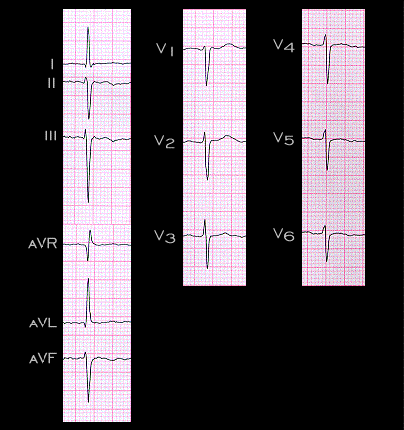
The electrocardiographic features of left anterior fascicular block may both mask and simulate the ECG findings of a prior Q wave infarction. The ECG shown here demonstrates the classical changes of left anterior fascicular block. As listed on page 3.3.2, these include:
- Small Q wave in leads I, aVL, and/or V5 and V6
- Small R wave in leads 3 and aVF.
- Frontal plane QRS axis between -30 and -90 degrees, although some insist that it be between -45 and -90 degrees (it is -60 degrees in his racing).
- QRS duration of less than 0.12 seconds.
- Poor R wave progression in chest leads with S wave in leads V5 and V6
